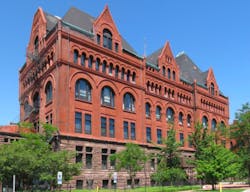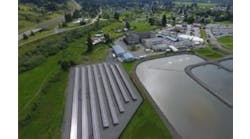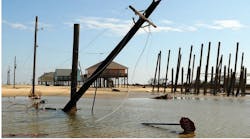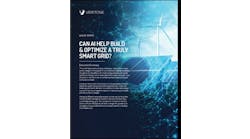The latest article in our special report series explores how microgrids can jumpstart university decarbonization efforts. Read on for real world examples of college microgrids.
Get the full report.
Higher education has become a standard bearer for climate action. More than 400 colleges and universities have pledged to become carbon neutral between now and 2050 (or earlier) through Second Nature’s Climate Leadership Network program and over 40 currently get all of their electricity supplies from renewable energy. And of the 180 schools that have reported their renewable energy data to the Association for the Advancement of Sustainability in Higher Education’s (AASHE) Sustainability Tracking, Assessment & Rating System (STARS), 91% use some renewable energy, according to Environment America.
Microgrids help campuses further their climate and clean energy goals in several ways.
For example, a microgrid controller can optimize the system for maximum use of low carbon energy. The microgrid controller determines the optimal mix of energy sources, including grid power, so that the campus uses the cleanest possible configuration available at a given time.
Microgrids also are often built as part of a larger energy performance contract. This means that the contractor starts the project by evaluating the campus for energy efficiency opportunities. This lowers energy use (and, therefore, costs) and reduces the campus’ carbon footprint. As the saying goes, the megawatt not used is the cheapest and cleanest megawatt. In addition, lowering campus energy demand can reduce the amount of generation that needs to be installed for the microgrid, which, in return, lowers costs.
Another way microgrids achieve efficiencies — and therefore lower carbon production—is by reducing what’s known as electric line loss. When electricity travels from power plants over transmission and distribution lines, an average of 5% dissipates in transit, according to the U.S. Energy Information Administration. The energy is produced, and consequent carbon created, but the power is never used; it is wasted energy. Microgrids help overcome this inefficiency because they are located in or near the buildings they serve. The electricity has little distance to travel so little, if any, is lost.
Tweet “
”
Microgrids help green the entire grid by efficiently orchestrating grid resources. When wind or solar energy suddenly ebb, microgrids can quickly inject energy onto the grid to help keep supply and demand in balance. Without such balancing services available, grid operators would need to limit the amount of renewable energy added to the grid. By allowing for use of more renewable energy, microgrids help lower the carbon footprint for the broader society.
Even as tried and true forms of renewable energy, such as solar and wind, are added to the grid, researchers are developing new clean technologies, among them hydrolysis for hydrogen production and renewable natural gas from landfill waste, according to SoCalGas. These technologies are particularly important, given the recent drive for electrification in some parts of the US. In an effort to curb carbon emissions, cities such as San Jose, California, and Berkeley, Calif., have established rules to make new buildings all electric. As new technologies commercialize and government policies evolve, microgrids can add or exchange generation resources.
Examples of university decarbonization with microgrids
Northeastern University says it is developing a microgrid that sets the bar for higher education, using a self-funded approach to bolster its campus resiliency while achieving sustainability goals.
Now in the planning stages, the integrated microgrid will serve the university’s 73-acre campus in Boston, Mass., a city that experiences urban power congestion and coastal challenges caused by increasingly severe storms.
The university sees the microgrid as a means to not only ensure reliable power, but also to reduce its carbon dioxide emissions 80% by 2050 (and possibly reach complete carbon neutrality), a goal Northeastern set several years ago as a signatory to the American College and University Presidents’ Climate Commitment (ACUPCC), which has transitioned to the Second Nature Climate Leadership Network. (More recently, the university has decided to move more aggressively and align itself with the City of Boston to become carbon neutral.)
Tufts University, also in Massachusetts, commissioned a microgrid to provide electricity, steam and hot water to around 60 buildings, and chilled water to an initial four, on Tufts’ Medford campus.
The university saw the microgrid as a way to not only reduce costs by 20%, but also cut greenhouse gas emissions 14% annually. The microgrid, which employs highly efficient CHP, contributes to achievement of university, city, state and federal sustainability, as well as carbon and other greenhouse gas emissions reduction goals.
Catch up on the first article in this series on college microgrids. And learn how microgrids protect campuses from outages, as well as optimize renewable energy. The third article explored why microgrids make financial sense for today’s universities.
The final entry in this series will explore how college microgrids act as teaching tools and community partners.
Download the full report, “The Genius of Microgrids in Higher Education,” courtesy of Siemens, to further explore the potential of microgrids for university decarbonization efforts and projects.







